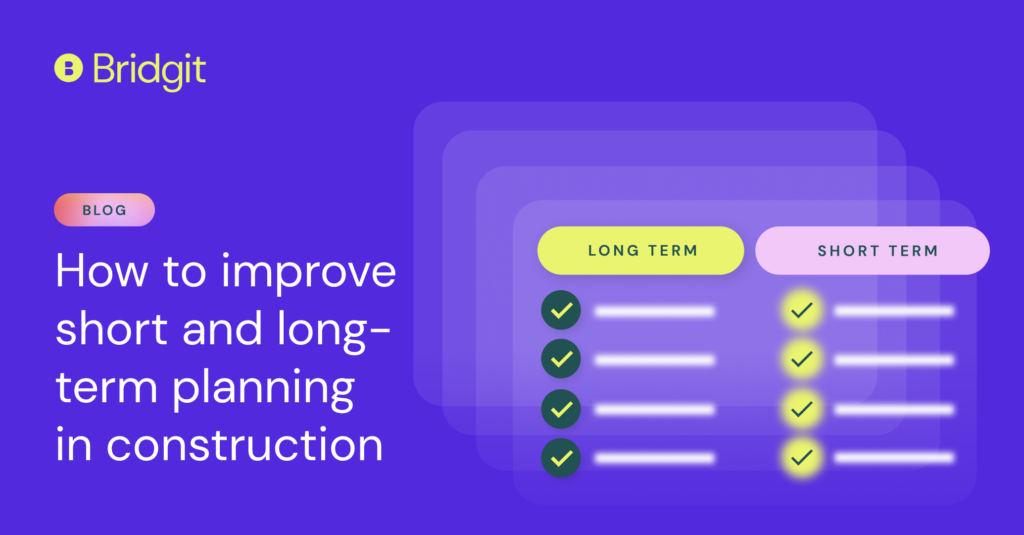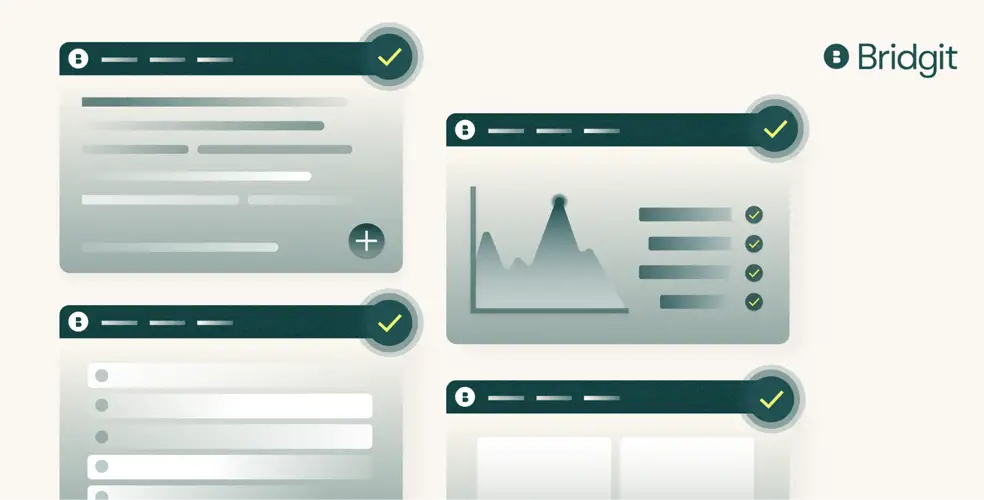Workforce planning is front and center for general contractors that are looking to streamline their project allocation management in response to these disruptive times – understandably so. The increase in project delays and the need to keep your workforce productivity high can be an incredibly tedious task if you’re trapped in a series of spreadsheets for hours on end trying to keep up with the ever-changing environment.
Table of Contents
In this article, we’ll explore some of the benefits that come along with automating your workforce planning with specialized software for the construction industry and the challenges it faces.
1. IMPROVING AND ENHANCING WORKER SAFETY
Let’s start with an important focus for most general contractors in 2023 – managing and maintaining the safety of your workforce. The best way for any leadership or human resources team to stay on top of maintaining worker safety is with information. Information that is readily available and easily accessible when decisions need to be made.
A workforce planning tool like Bridgit Bench was designed to surface relevant information when managing your people. Part of that includes the ability to customize the software to track data relevant to your workforce and organization, which can (and should) include, but is not limited to:
- Risk levels for team members and job sites
- Travel history
- Sick team members
- Furloughed team members
- Essential vs non-essential projects
There’s no such thing as “overkill” when it comes to ensuring the safety of your workforce. Every step should be taken. The ability to stay ahead of any safety risks as an organization can be the difference between projects being shut down, delayed, or most importantly – a potential accident on the job site.
2. SHARING YOUR WORKFORCE BETWEEN OFFICES
Trying to share resources between offices is one of the most difficult things to pull off in spreadsheets. If you work in a company with multiple offices, each office is generally siloed and has its own workforce planning process done on one spreadsheet, that one or a few people maintain.
This might be okay if your offices are geographically siloed (i.e one office in Buffalo and another in Arizona) and sharing people between them is a tall task. Many contractors operate regionally though, and being able to collaborate with offices, and share your workforce between them, can help fill gaps as project timelines change.
Bridgit Bench has a Groups feature that helps you organize and house all your workforce data in a single place. You can categorize every person and project into a group and have each group represent a different office, region, or even division. The ability to store all your data in one place with the flexibility to organize, segment, and filter your people and projects by office or region. That means your different offices can focus on their own planning, but also share winning strategies, best practices, and even available resources.
The effectiveness of Groups played out in exactly this way for Pennsylvania’s Wohlsen Construction Company. They talked about their experience trying to share resources before Bridgit Bench: “If you used that Excel worksheet, you could gain insight into one specific region, but we wouldn’t be able to see what the next region had in terms of availability or capacity, it really limited the visibility and scope of our resources, and that resulted in over-hiring and poor utilization of our team members.”
After using Bridgit Bench for a year they said “our utilization is exceeding what our target metrics are.” They also elaborated on Wohlsen’s ability to collaborate and share resources amongst regional offices. “We have someone here in Pennsylvania that’s supporting a project in Connecticut now, and that’s not something that would’ve traditionally happened. Since we have full organizational insight, we’re able to do that in a far more effective way.”
You can watch more of our conversation with Wohlsen below.
3. PROVIDING MORE INSIGHT INTO WORKFORCE UTILIZATION
Speaking of utilization, your workforce utilization rate is one of the most important metrics you should be aware of and working to improve. The reason why it’s such an important metric to track is that it informs you of how effectively you’re using your team. For example, if you are using 65 percent of your workforce, it means that you have a lot of room to take on more work. Knowing this data can help you win more bids since you’re not guessing at your capacity to take on more work. On the flip side, if your utilization is above 100 percent, meaning you have people double booked on jobs, you understand that you have a labor shortage, and you need to recruit people.
Generally, there isn’t a standard way the construction industry calculates their utilization, but every company should work to define the way they do it. As a rough definition utilization rates in construction are often defined as:
The amount of time your team spends working on projects vs. the total amount of time that employee is available to work. In short, what is the billing efficiency of your team?
To accurately calculate your team’s utilization rate, you need to accurately track their time. Bridgit Bench not only helps to track your team’s time using simple project allocation percentages, but can directly calculate your utilization rate based on specific titles, divisions, and regions.
Having insight into your workforce utilization rates can be an absolute game-changer when industry-wide uncertainty persists and firms are needing to better understand their team’s productivity and profitability.

Interested in improving your long-term planning?
Check out our recent post about balancing short-term workforce planning with long-term company strategies.
4. USING FORECASTING FOR BETTER PLANNING
Forecasting is more than looking ahead at your project timeline – it’s about staying ahead of your project timeline and understanding the workforce demand from your projects. Construction projects are won or lost in the planning phase and the same can be said for your overall organizational strategies.
The ability to look ahead and analyze your project pipeline and workforce demands will be one of the ways you can set yourself up for success this year and beyond. Tools like Bridgit Bench can help to make your company’s future more predictable and give you more time to plan ahead should issues surface. On top of that, having forecasting capabilities will allow you to:
- Identify opportunities to take on new projects
- Identify underutilized resources
- Understand the impact when projects get pushed or delayed
- Understand the impact of your project pursuits on your resource strategy
- Stay ahead of, and make informed decisions around recruitment strategies
Rogers-O’Brien, one of the largest contractors in Texas, uses Bridgit’s forecasting capabilities to plan for their pursuits, you can see their process below:
“We’ve got allocated resources on awarded projects and then we have all these ‘what if’ projects. We gauge project pursuits off their chances of winning. Are we going to win it or will somebody else? And then is it even going to be built? If those two criteria meet that threshold, then we’re able to consider that something that we need to start seriously allocating potential resources to.It really allows us to think through multiple scenarios. Where before it was really tough to think about it at that granular level when you’re thinking 12, 20, and 24 months out. It’s become much more streamlined and it’s much more accessible.”
If you want to read more about Rogers-O’Brien’s experience with Bridgit Bench, read their success story here.
Bridgit Bench has helped Rogers-O-Brien and hundreds of other contractors automate their workforce planning so they can take advantage of the recent volatility of the industry. The tool was built to keep up with the dynamism of construction, giving you the insights you need to effectively plan your most important resource: your people.


